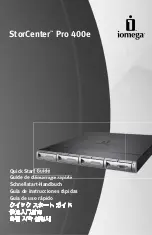
25
3.
As shown in callout 2 on
Figure 18
, hold the card by the front panel with one hand and support
the card bottom with the other. Slide the card steadily into the slot along the guide rails.
4.
When most part of the card is inserted in the slot, press the ejector levers on the card outward.
5.
Push the card until the positioning pin on card touches the hole on the chassis.
6.
As shown in callout 3 on
Figure 18
, press the ejector levers inward until the ejector levers touch the
panel tightly and the card seats into the backplane
7.
As shown in callout 4 on
Figure 18
, fasten the captive screws on the card.
8.
When the switch is powered on, check the running status of the card.
NOTE:
x
You can check the running status of a card by referring to the card status LED (SLOT) on the MPU of the
switch. If the RUN LED blinks, the card in the slot operates properly. For more information about card
status LED (SLOT), see the chapter “Appendix C LEDs.”
x
To ensure ventilation of the switch, install a blank panel (on an empty MPU, LPU, or switching fabric
module slot. The blank panel for an MPU slot is the same as that for an LPU slot.
Figure 18 Install a card
2
1
3
3
4
4
(1) Loosen the captive screws
(2) Insert the card into the slot
(3) Press the ejector levers inward
(4) Fasten the captive screws
Installing a power supply
The A10500 Switch Series adopts N + 1 or N + N power redundancy and supports AC power input.
















































